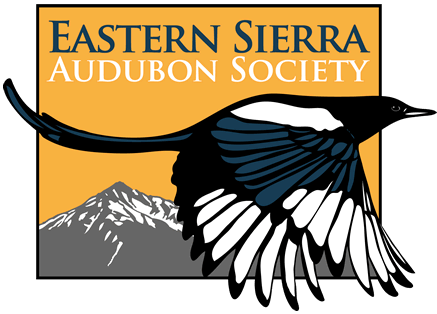Heindel WAVE Articles

Home | Programs | Field Trips | Calendar | Newsletter | Education | Eastern Sierra Birds | Inyo Bird Checklist | Owens Lake | Bird-a-thon | Membership | About ESAS
The Winter of 1996-1997 in Inyo
by Tom and Jo Heindel
Winter is the wild card of a birding year as it is the most variable and unpredictable of the seasons. We never know which winter visitors to expect from the north or if any mountain species will descend from heaven knows where.The weather has been, thus far, relatively mild. Ice on Haiwee and Tinemaha reservoirs and Klondike Lake has been virtually non-existent. All this added up to another winter with its many surprises. Most spectacular was a great infusion of birds that are normally associated with the mountains. This included Clark’s Nutcrackers, Mountain Chickadees, several species of nuthatches, Cassin’s Finches, Brown Creepers, Gray-crowned Rosy Finches, Evening Grosbeaks and Pine Siskins.
This phenomenon was not just a local one but had far reaching effects over all of the western states. While some feel that the occurrence of mountain species in the lowlands just means that birds have come down from the high country nearby, others feel that often these birds have traveled great distances.
Victor Emanual, founder of one of the largest bird tour companies in the country, VENT, called it the largest invasion of northern or mountain species since 1972 (Birdletter vol.20: p.4). Victor attributed this invasion to a very dry summer in the western mountains, resulting in poor food production. The birds are thus forced to move from their normal wintering grounds to the lowlands to locate food.
The big question is where do the Inyo County visitors originate? In an effort to answer this question we have banded many hundreds of these birds in Big Pine this winter. Among the most frequent finds in the nets have been pink and purple Cassin’s Finches, yellow and black American Goldfinches and streaked Pine Siskins. Now we wait and hope that researchers in the summering areas will re-net them and report the findings to the Bird Banding Lab in Maryland, which in turn will notify us and we will notify you!
In addition to mountain or northern visitors a few other bird observations are noteworthy. Tundra Swans normally return to Inyo County the first week of November. The earliest ever was 22 Oct 1966 at Little Lake. This winter two birds tied that record when they showed up at Klondike Lake. These swans normally depart the last week of February or the first week of March 5 so it was a surprise when they departed the second week of January. A hard northern freeze could cause their reappearance but at this date it was the earliest departure on record.
Prior to this year hummingbirds have been recorded every month except January. This year two different male Anna’s Hummingbirds frequented our feeders from 8 January into February. A heat lamp on the feeder at night assures that the syrup remains unfrozen for an early dawn visit. An incongruous sight was one male singing while sitting at the feeder soaking up the heat lamp while snowflakes fell all around him. The Anna’s Hummingbird is the hardiest of all hummingbirds and Ridgecrest typically reports over a dozen on their Christmas Counts so having a couple remain during a mild winter is no longer unexpected.
Another surprise was a one day visit to our yard by a Lark Bunting where it flew into a net, got a pretty aluminum band and was released only to disappear completely. A quick call to Jim and Debby Parker in Bishop assured us that they still had “their” Lark Bunting. So were these two Lark Buntings the only ones in the whole county and both were seen by birders? Not likely! Also new to our yard and very unusual on the valley floor were four Gray-crowned Rosy Finches who arrived the morning after the January snow huddling together with House Sparrows and blackbirds gathering seeds and energy in protected areas.
The singing by Mockingbirds, Bewick’s Wrens, Song Sparrows, House Finches, and White-crowned Sparrows heralds the end of winter and promises another exciting spring migration. Our first migrants have already returned with the chestnut flash of four Cinnamon Teal landing at Dirty Socks on 23 January followed by a very early Turkey Vulture seen in Independence by Andrew Kirk on 28 January followed by a Tree Swallow pulled out of the blue sky at Owens Lake by Larry Nahm on 1 February. We have all been dealt another hand of cards, maybe slightly more predictable than winter’s but not without surprises. It’s time to go play!

